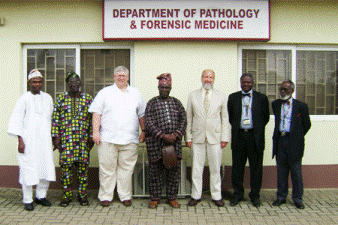Natural Resources, School of
Date of this Version
2009
Document Type
Article
Citation
Revista do Instituto de Medicina Tropical de São Paulo 51:3 (2009), pp. 119-130. doi: 10.1590/S0036-46652009000300001
Abstract
The authors present a review of records of intestinal parasitic helminths from animals in human archaeological remains, reported since the emergence of paleopathological studies. The objective was to relate paleoparasitological findings to geographic, biotic, and abiotic factors from the environment in which the prehistoric populations lived, and understand some aspects related to the process of human dispersion and biological and cultural evolution. Modification of eating habits and the incorporation of new cultural practices are analyzed from the perspective of zoonoses from prehistory to the present day, especially in Brazilian indigenous populations. Three tables identifying the helminths, their natural hosts, dates, and sites of archaeological findings complete this review. In conclusion, various zoonoses known today have occurred since antiquity, and these data, combined with studies on the emergence and reemergence of diseases, could make possible to compose scenarios for the future.
Included in
Archaeological Anthropology Commons, Ecology and Evolutionary Biology Commons, Environmental Public Health Commons, Other Public Health Commons, Parasitology Commons


Comments
Published by Instituto de Medicina Tropical de São Paulo; http://www.scielo.br
CC-BY-NC license